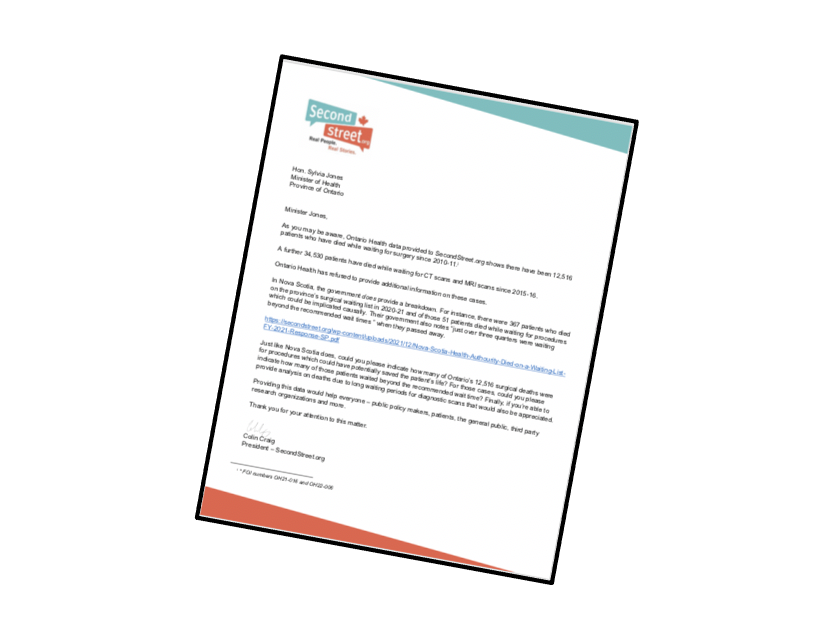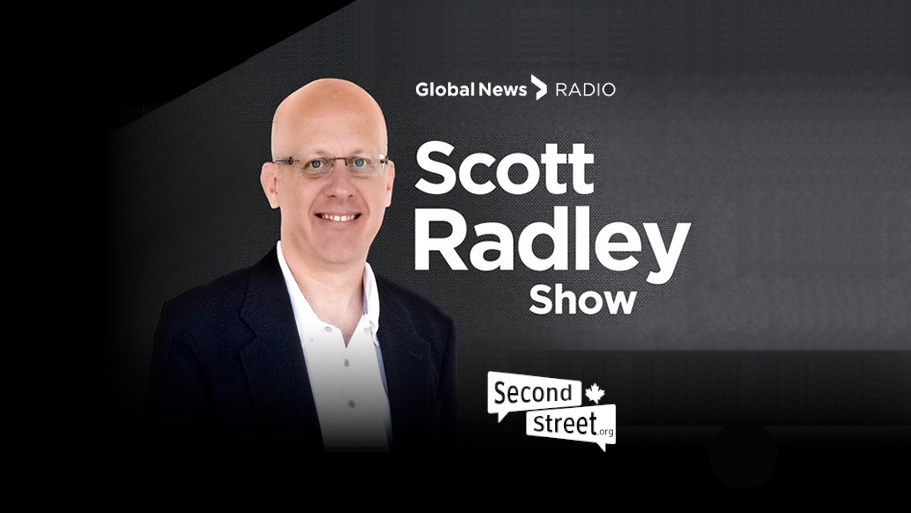
Another look at Winnipeg’s city council pension
SecondStreet.org takes another look at the bill for Winnipeg’s city council pension plan.

SecondStreet.org takes another look at the bill for Winnipeg’s city council pension plan.

SecondStreet.org recently wrote to Ontario’s Minister of Health to seek additional details on patients dying on waiting lists in the province.

SecondStreet.org continued our research into cool ways entrepreneurs are reducing emissions through new technology and processes.

Ukrainian Oksana Tkachuk breaks down ways that Canadians can support Ukraine during the ongoing invasion by Russian forces.

This 5-Point plan is taxpayer-friendly, helps reduce emissions, reduces global dependence on oil from dictatorships like Russia and creates private sector jobs without requiring subsidies.

We speak with Chris Vander Doelen from Harrow, Ontario about how his trip to Los Angeles saved his life from prostate cancer.

We sit down with Ken from Lillooet, British Columbia, to discuss how access to a private clinic saved his shoulder from irreparable damage.

Jim Carrey implied that Canada’s health care system was flawless, but does he know the facts about Canada’s growing waiting list crisis?

We discuss potential solutions for the hospital waiting list crisis, and what we as a country can do to fix our failing health care system.

SecondStreet.org unpacks a recent study that shows more than 11,500 patients died on medical waitlists in one year in Canada.

We spoke with Max about his health experiences in Canada and why he chose to pay over $14,000 for hip surgery in Lithuania.

A new poll commissioned by think tank SecondStreet.org shows that a large majority of Canadians support several health care reform options, including…
If Canadians lived healthier lives, we could reduce demand for emergency services, orthopaedic surgeries, primary care and more.
For instance, if you visit the Canadian Cancer Society’s website, you’ll read that “about four in ten” cancer cases are preventable. The Heart and Stroke Foundation notes that “almost 80 percent of premature heart disease and stroke can be prevented through healthy behaviours.” A similar number of Diabetes cases are also preventable.
Many joint replacements and visits to ERs and walk-in clinics could also be avoided through healthy living.
To be sure, not all health problems can be avoided through healthy living – everyday the system treats Canadians with genetic conditions, helps those injured in unavoidable accidents and more.
But there is an opportunity to reduce pressure on the health care system through Canadians shifting to healthier lifestyles – better diets, more exercise, etc.
To learn more, watch our Health Reform Now documentary (scroll up) or see this column.
European countries will partner with anyone who can help patients.
It doesn’t matter if it’s a non-profit, a government entity or a private clinic. What matters is that patients receive quality treatment, in a timely manner and for a competitive price.
In Canada, governments often delivery services using government-run hospitals instead of seeing if non-profit or private clinics could deliver the services more effectively.
When governments have partnered with non-profit and private clinics, the results have often been quite good – Saskatchewan, Ontario and British Columbia are just a few examples of where partnerships have worked well.
Canada should pursue more of these partnerships to reduce wait times and increase the volume of services provided to patients.
To learn more, watch our Health Reform Now documentary (scroll up) or see the links above.
In Canada, citizens pay high taxes each year and we’re promised universal health care services in return. The problem is, wait times are often extremely long in our health system – sometimes patients have to wait years to see a specialist or receive surgery.
If patients don’t want to wait long periods, they often have to reach into their own pocket and pay for treatment outside the province or country.
Throughout the European Union, we also find universal health care systems. But a key difference is that EU patients have the right to go to other EU countries, pay for surgery and then be reimbursed by their home government. Reimbursements cover up to what the patient’s home government would have spent to provide the treatment locally.
If Canada copied this approach, a patient waiting a year to get their hip operation could instead receive treatment next week in one of thousands of surgical clinics throughout the developed world.
Governments benefit too as the patient is now back on their feet and avoiding complications that sometimes come with long wait times – meaning the government doesn’t have to treat those complications on top of the initial health problem.
To learn more, watch our Health Reform Now documentary (scroll up) or this shorter video.
Canada is the only country in the world that puts up barriers, or outright bans patients from paying for health services locally.
For instance, a patient in Toronto cannot pay for a hip operation at a private clinic in Toronto. Their only option is to wait for the government to eventually provide treatment or leave the province and pay elsewhere.
Countries with better-performing universal health care systems do not have such bans. They allow patients a choice – use the public system or pay privately for treatment. Sweden, France, Australia and more – they all allow choice.
Why? One reason is that allowing choice means some patients will decide to pay privately. This takes pressure off the public system. For instance, in Sweden, 87% of patients use the public system, but 13% purchase private health insurance.
Ultimately, more choice improves access for patients.
To learn more, watch our Health Reform Now documentary (scroll up) or watch this short clip on this topic.
In Canada, most hospitals receive a cheque from the government each year and are then asked to do their best to help patients. This approach is known as “block funding”.
Under this model, a patient walking in the door represents a drain on the hospital’s budget. Over the course of a year, hospital administrators have to make sure the budget stretches out so services are rationed. This is why you might have to wait until next year or the year after for a hip operation, knee operation, etc.
In better-performing universal health systems, they take the opposite approach – hospitals receive money from the government each time they help a patient. If a hospital completes a knee operation, it might receive, say, $10,000. If it completes a knee operation on another patient, it receives another $10,000.
This model incentivizes hospitals to help more patients – to help more patients with knee operations, cataract surgery, etc. This approach also incentivizes hospitals to spend money on expenses that help patients (e.g. more doctors, nurses, equipment, etc.) rather than using the money on expenses that don’t help patients (e.g. more admin staff).
To learn more about this policy option, please watch our Health Reform Now documentary (scroll up) or see this post by MEI.